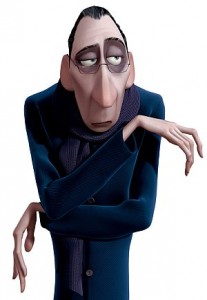“But some of these concerns become moot when you think back to the impulse that lies behind serious criticism: the impulse to analyze, to explain, to teach, to judge meaningfully.”-Mendelsohn
“The art critic, however, formalizes and deliberately exemplifies the role of the spectator who realizes the artist’s work—not by leaving it just as it is, but by adding something to it, making a personal contribution.” -Schwabsky
“Popular culture is one of the sites where this struggle for and against a culture of the powerful is engaged: it is also the stake to be won or lost in that struggle” –Hall
Mendelsohn’s description, in my opinion, presents a largely accurate description of the purpose of cultural criticism and how the age of Amazon and Yelp challenges its impact. Criticism is an art, and the artist needs respect and space in order to create. The critic’s analysis is intended to challenge and teach its audience. The cultural critic has the expertise and taste necessary to make assertions about art in an environment that is conducive to give “meaningful” judgement. This means, as Mendelsohn states, peers that review the work with similar levels of expertise can make sure the analysis is informed and factual. The keyword of this quote in relation to meaningful judgement is “serious.” Just as the art challenges its audience by presenting an argument or eliciting an emotion, the critic similarly challenges its audience’s interpretations of the art with his or her taste and knowledge. Someone sitting on Amazon has no peers or editors to tell them comparing Eraserhead to Garfield 2: A Tail of Two Kitties would be ill-advised. This interpretation does nothing to challenge the audience’s thoughts and emotional reactions to the film.
In this way, I definitely agree that we should acknowledge the importance of the “serious” criticism in how it supplements the piece it interprets, as Schwabsky claims. Quality is crucial to meaningful cultural criticism because a serious critique challenges the piece without sensationalizing its analysis out of respect for the art form. Generally speaking, the public cannot help but to be drawn to a scathing review that lambasts an art piece, but this type of criticism fails to teach or challenge its audience in an intellectually fulfilling way. The way I see it, the critic follows a code of ethics similar to that of a journalist. I concur with Mendelsohn that the critic is essential because it initiates important academic discussion of art for the sake of the art, not purely for the sake of audience’s entertainment. A serious critic’s obligation to analyze for the art form compels them to perform meaningful criticism. This meaningful criticism guides the conversation of relevant themes and ideas in order to enhance the audience’s experience. Additionally, I believe legitimate criticism is essential for the creation and improvement of art. The serious critic has an obligation to construct legitimate analysis in order to advance the artist’s craft. This is relevant on an individual level and on a larger scale. Art cannot exist without outside experts with Mendelsohn’s formula of knowledge and taste presenting constructive feedback and criticism, their “personal contributions”. Art and criticism have a mutualistic relationship, in which each entity feeds and improves the other.
I think Hall’s definition of popular culture helps delineate the critic’s responsibility to the audience. The culture of the powerful he mentions, to me, represents high culture. This type of culture is highly intellectual and not easily accessible or understood by a casual observer. Mendelsohn mentions that the serious critic must teach, and this includes less enlightened audiences. Of course, this all depends on context, but nonetheless demonstrates Hall’s “struggle.” The critic judges as an outsider, not as a fellow artist. This outsider status is not only valuable because it gives a unique perspective for the artist. It also allows criticism to extend the conversation and debate of the artwork to wider audiences. Therefore the critic also has an obligation to serve as a bridge from the elitism of high culture to the masses. Such a role is difficult when the critic intends to provide serious analysis that will have a positive impact on the art and create a meaningful conversation.
The critic has too much to juggle in the age of instant gratification. By the time a critic has challenged the audience’s interpretation, provided meaningful criticism for the artist, and created a bridge to teach casual audience members about the art, I’m scrolling through Twitter looking at puppy videos. Criticism is a noble, complex art in a time where there is little appreciation for such things.

855 Comments
We are really grateful for your blog post. You will find a lot of approaches after visiting your post. I was exactly searching for. Thanks for such post and please keep it up. Great work. alexistogel daftar